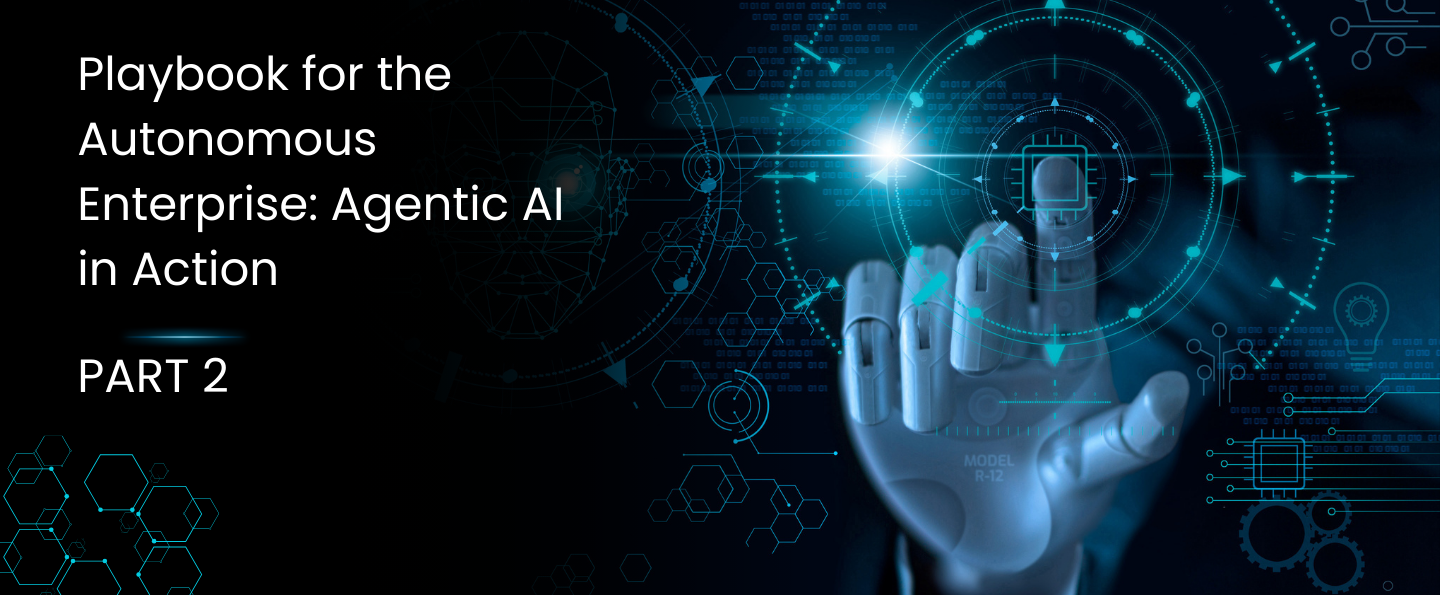
Luna Bora
Senior Director, MResult
In the first post in this series, we explored the promise of Agentic AI—systems that don’t just respond to prompts but act autonomously, evolving from tools to teammates. Now, we shift from the philosophical to the practical. How do enterprises get ready to adopt Agentic AI? What does readiness even mean in this context?
Having led and witnessed AI transformations from the inside, I can tell you this: readiness isn’t a checkbox. It’s a mindset, a capability, and a coordinated effort across the enterprise. And while no two journeys are the same, the markers of maturity are increasingly clear. The risks of ignoring these markers? Costly AI experiments, eroded trust, regulatory pitfalls, and fragmented systems that create more chaos than value.
1. Vision with Velocity: Setting the Roadmap and Pathways
You do not set out on a journey without a destination in mind. Organizations must contemplate on what is their objective and why it is relevant for their business in current context. Agentic AI requires a mature, well thought strategy that begins with a overall enterprise vision definition.
Agentic AI doesn’t work as a departmental initiative. It requires a top-down strategy driven by an executive mandate. A hop and skip approach to build scattered utilities creates further chaos. The purpose of such programs is to drive sustained business advantage and require leadership commitment. Unless envisioned at the highest levels and internalized across the organization, it can potentially result in a wild goose chase. In fact, 61% of AI projects fail to move beyond pilot because they lack clear leadership and cross-functional alignment, as per a report by IDC.
This is why organizations are rapidly appointing Chief AI Officers (CAIOs). Their mandate: define a cohesive vision, craft a phased roadmap, and ensure continuous alignment across business, data, and technology functions. A strong CAIO office partners with the CEO to secure funding, prioritize use cases, and build enterprise-wide governance.
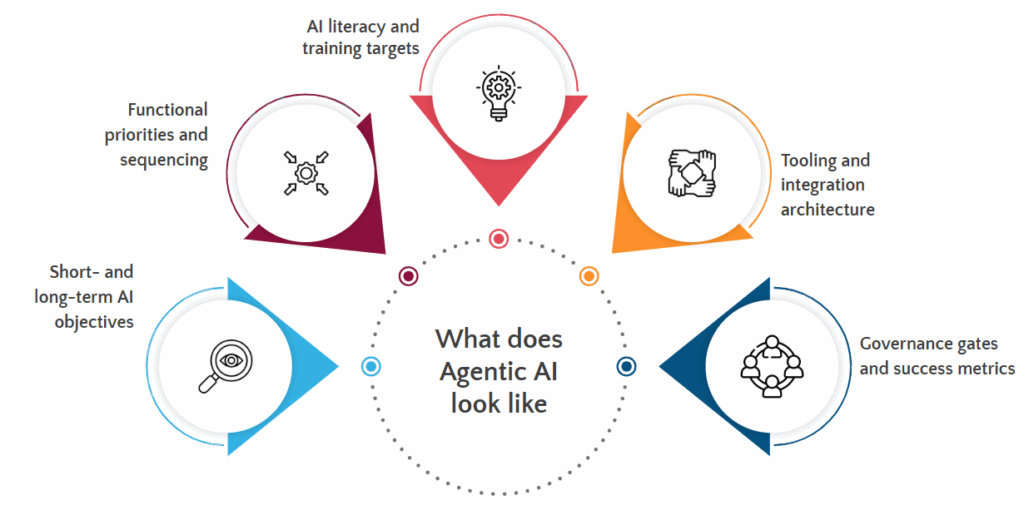
With a clear blueprint in place, Agentic AI initiatives gain momentum and avoid common pitfalls. Teams leading these programs convert this momentum into impact by delivering clear, measurable improvements that reshape workflows and drive business value. These outcomes build lasting trust and confidence across the board.
2. Culture Chews Code: Building the AI-First Mindset
Readiness is not just about infrastructure. It’s about people. As I discussed in detail in the previous article in this series, enterprises must foster an AI-first mindset. Building receptivity and drive to AI adoption is foundational for long term sustenance and impact. Otherwise, the leadership vision for technology pivot remains far away from realization.
Programs like AI academies, sandbox environments, and internal certification can help drive organizational alignment. But beyond training, enterprises must embed AI expectations into performance metrics.
they won't.
One enterprise I worked with created cross-functional AI squads—pairing business leads, process owners, and engineers to co-own AI initiatives. That fusion of mindset and method accelerated adoption by over 3x within a year.

3. Process Readiness: Don’t Automate the Mess
Agentic AI succeeds only when embedded into structured, modular workflows. Yet, most enterprises struggle with legacy processes that are brittle, undocumented, or linear. Disjointed, distributed and cluttered processes, systems and tools create a web of complexities that make Agentic AI programs a non-starter. In the absence of process readiness, integrations are cumbersome. When workflows are modular, AI can be injected at key junctions without rewriting entire systems.
Unless the processes are streamlined, you can build agents that act with autonomy but lack guardrails. This only amplifies risk and adversely impacts success factors.
The AI Mindset: A Cultural Shift, Not Just a Technological One
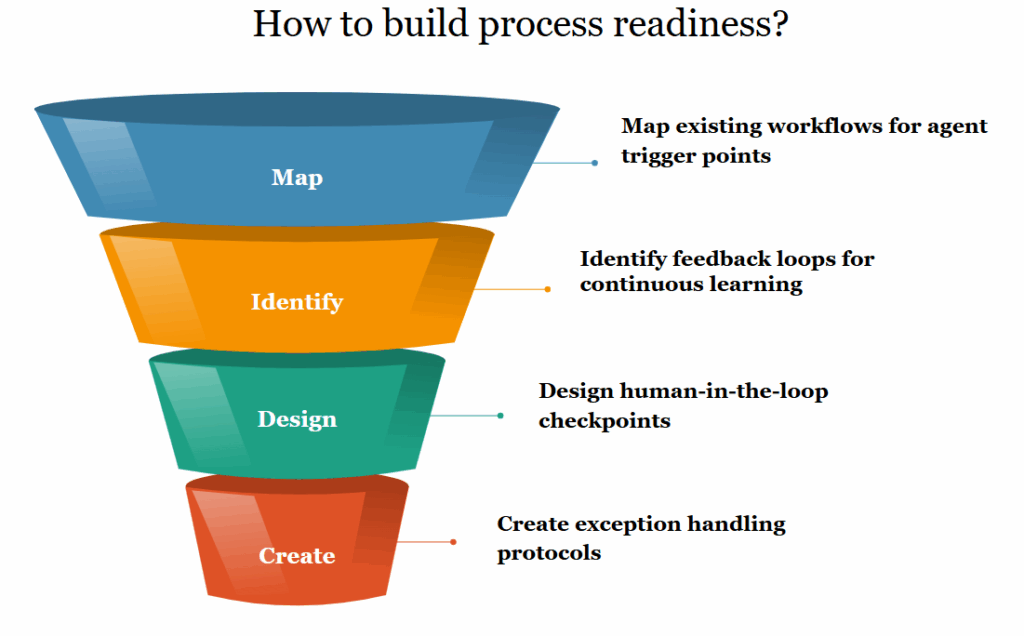
4. Technical Readiness: Aligning Tools, Models, and Infrastructure
Having a technology roadmap is a good starting point. But technical readiness isn’t about building bespoke models and shopping for tools. Rather, the focus must be on aligning existing foundation models with enterprise workflows. The tech teams must evaluate compatible frameworks, assess readily available models for specific use cases, check feasibility of right API integration across the tech landscape and build required guardrails for Responsible AI practices. These are necessary to move beyond standalone pilots to scalable long-term programs that integrate with existing ecosystems.
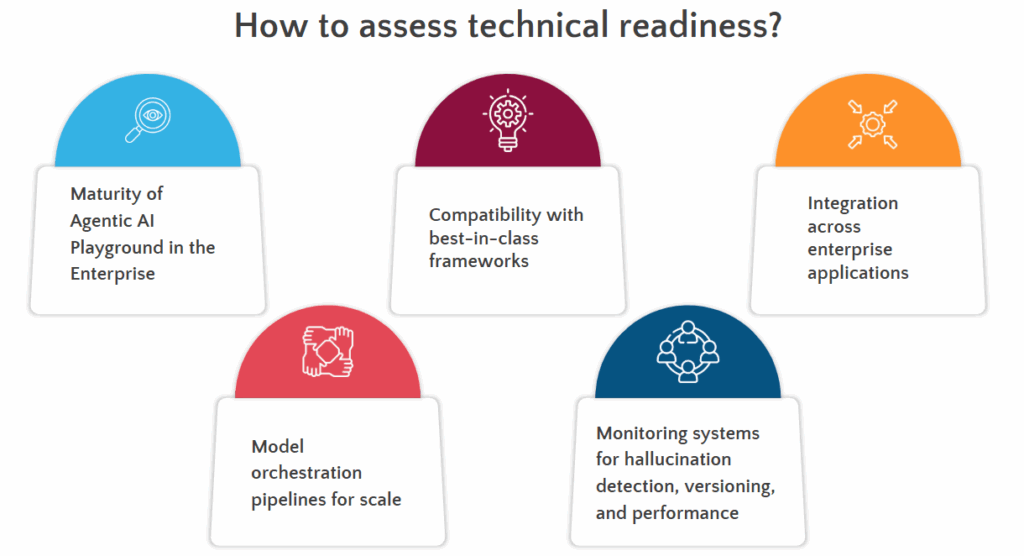
5. Data Readiness: No Agent is Smarter Than Its Dataset
Everything begins with data. It is the lifeblood of an enterprise. Agentic AI requires a strong foundation of data maturity and organizations still a step away from a data modernization journey may struggle to get desired outcomes. It is like constructing a house without building a foundation. Siloed, outdated, or ungoverned data is a bane for any AI initiative. In fact, data readiness is the precondition for AI roadmap.
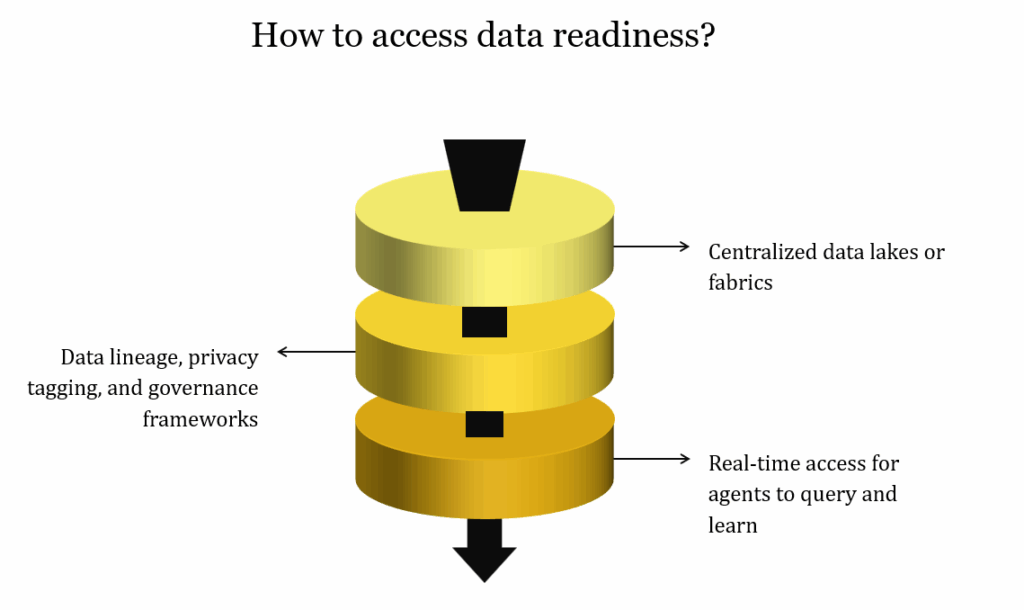
6. Legal, Compliance, and Security Readiness: Guardrails for Autonomy
As agents act on behalf of your enterprise, the risk surface is expansive. Legal, compliance, and IT teams must define a definitive framework and build guardrails for functioning of autonomous agents. The thresholds of human in the loop have to be clearly defined. An oversight can cause enormous damage to the organization’s reputation, create confusion among employees and clients, and also expose the ecosystem to external risks. As third-party systems and open-source models are widely used to build Agents, complexity increases. Legal approvals for autonomous tasks, compliant frameworks and secure architecture are non-negotiable when driving Agentic AI initiatives.
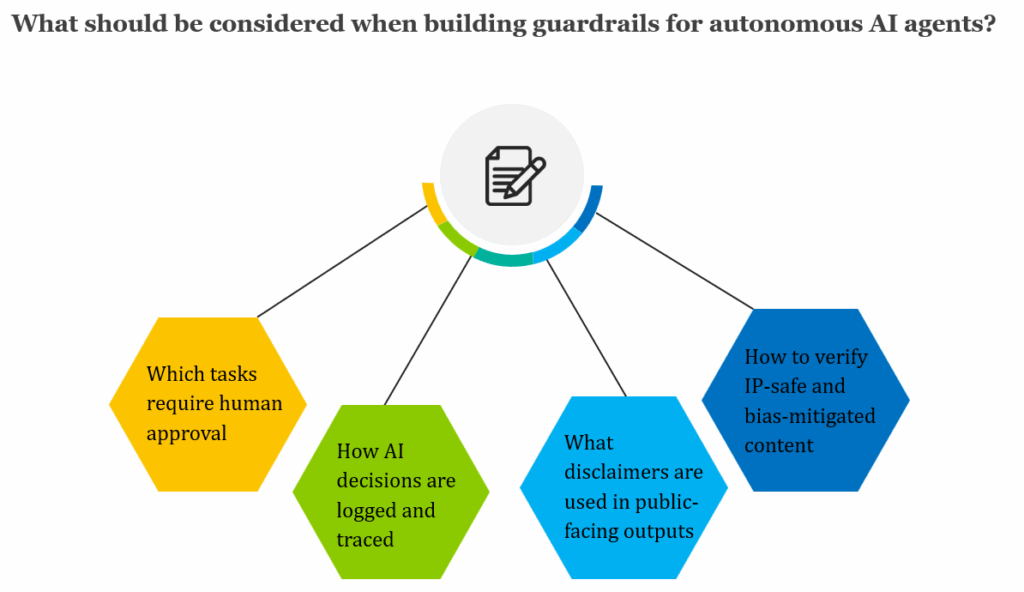
Caution: Be Prepared for the Plunge to the Deep End
Jumping into Agentic AI without readiness is like giving a pilot license to someone who’s never seen a cockpit. Intent is good, roadmap is aspirational but being equipped for the journey is essential. An enterprise must build the right ecosystem and mature systems before they envision an Agentic AI roadmap.
What is the risk with lack of preparedness?
- Agents producing biased or incorrect outputs
- Legal issues from unvetted content
- Inconsistent user experiences
- Lack of visibility into autonomous decisions
- Low ROI on AI investments
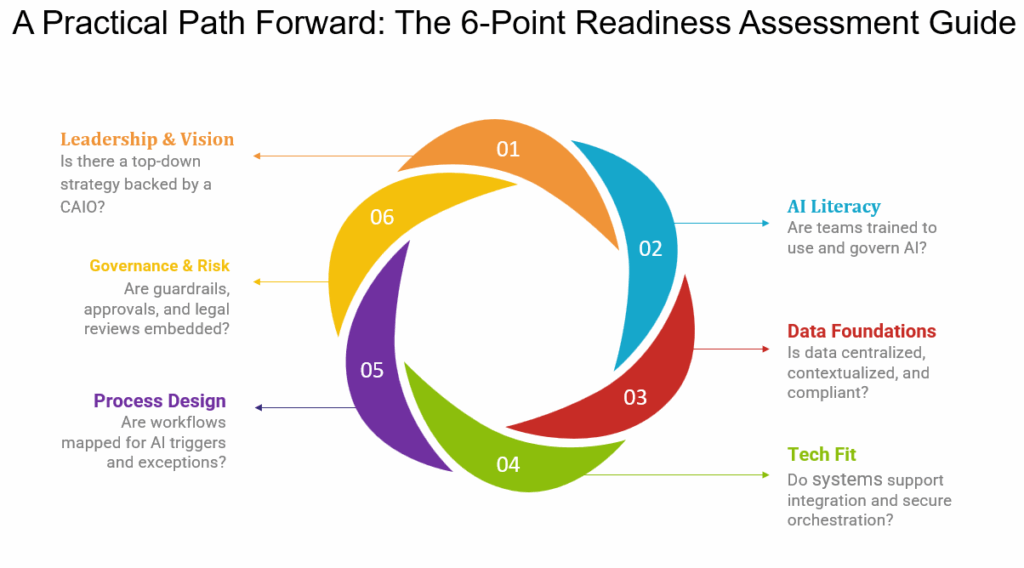
Readiness is the Strategy, Success is an Orchestration
Agentic AI adoption is accelerating. According to Deloitte, over 40% of Fortune 500 firms have active Agentic AI pilots, and yet only 18% report satisfaction with the results. Why the gap? The answer lies in their readiness.
This race is not about being first. It’s about being prepared for a long haul.
It rewards maturity.
Colloquially speaking, it’s a marathon and not a sprint. You need toned muscles and deep commitment to make it to the finish line. The right foundation of technology, process and data readiness leads to a secure and scalable program with demonstrable and dependable outcomes, resilient processes, and responsible AI practices.
While you assess your enterprise’s readiness for this exciting journey, let me gather stories that show what happens when vision meets execution.
In the next part of this series, read about some real-world Agentic AI deployments across sectors. ⬇️


